
The Echoing Strangers is a 1952 mystery detective novel by the British writer Gladys Mitchell. It is the twenty fifth entry in her long-running series featuring the psychoanalyst and amateur detective Mrs Bradley.
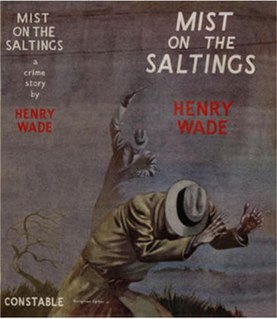
Mist on the Saltings is a 1933 mystery thriller novel by the British writer Henry Wade. It marked a change in Wade's work, part of the Golden Age of Detective Fiction, with a shift toward more realistic character development and a favouring of accurate police procedural methods over the puzzle elements compared to his earlier novels. Celebrated crime novelist Dorothy L. Sayers wrote a review of the novel for the Sunday Times.

The Hanging Captain is a 1932 mystery detective novel by the British writer Henry Wade. Wade was a writer of the Golden Age of Detective Fiction, best known for his series featuring Chief Inspector Poole. This was one of a number of stand-alone novels he wrote.

A Dying Fall is a 1955 mystery detective novel by the British writer Henry Wade. It was the penultimate novel by Wade, one of the leading writers of the Golden Age of Detective Fiction. It was followed by his final novel The Litmore Snatch two years later

Constable Guard Thyself is a 1934 mystery detective novel by the British writer Henry Wade. It was the third in a series of seven novels featuring the character of Chief Inspector Poole, although it was preceded by the 1933 short story collection Policeman's Lot in which seven of the twelve stories had feaured Poole. After his more experimental novel Mist on the Saltings Wade returned to the traditional detective model.
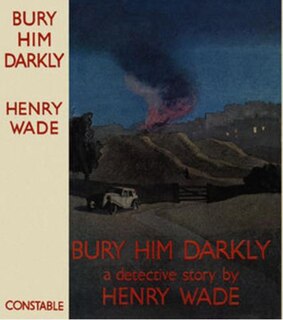
Bury Him Darkly is a 1936 mystery detective novel by the British writer Henry Wade. It was the fourth in a series of seven novels featuring the character of Inspector Poole. Along with the following Poole novel, Lonely Magdalen, it marked a shift towards more realistic police procedurals that has been described as pioneering. Superintendent Fraser, who appeared in Wade's fist novel The Verdict of You All, also appears as one of the characters.

The Verdict of You All is a 1926 mystery detective novel by the British writer Henry Wade, his debut novel. Both this and his following novel The Missing Partners revolve around potential miscarriages of justice. It was published in the United States by Payson and Clarke in 1927. A success it launched his career as one of the prominent writers during the Golden Age of Detective Fiction. The title refers to the traditional question asked in court by a judge of the jury to establish whether they have reached a unanimous verdict.

The Missing Partners is a 1928 mystery detective novel by the British writer Henry Wade. It was his second novel following his successful debut The Verdict of You All in 1926.
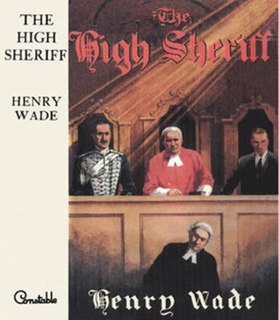
The High Sheriff is a 1937 mystery detective novel by the British writer Henry Wade. Wade was a writer of the Golden Age of Detective Fiction, best known for his series featuring Inspector Poole. This was one of a number of stand-alone novels he wrote, structured as a partially inverted detective story.

The Twenty-Third Man is a 1957 mystery detective novel by the British writer Gladys Mitchell. It is the thirtieth in the long-running series of books featuring Mitchell's best known creation, the psychoanalyst and amateur detective Mrs Bradley.
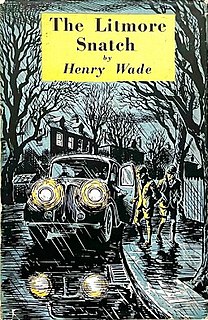
The Litmore Snatch is a 1957 detective thriller novel by the British writer Henry Wade. It was his final novel. Like much of Wade's work it takes the form of a standard police procedural. A review in The Guardian by fellow crime writer Anthony Berkeley considered the "book is a quiet and almost factual account of the police procedure following the kidnapping of a small boy for ransom, and personally I found it fascinating"
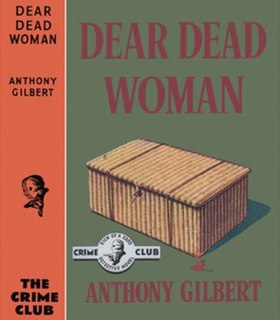
Dear Dead Woman is a 1940 mystery detective novel by Anthony Gilbert, the pen name of British writer Lucy Beatrice Malleson. It is the seventh in her long-running series featuring the unscrupulous London solicitor and detective Arthur Crook. In 1942 it was published in America under the alternative title Death Takes a Redhead.

The Mystery of the Open Window is a 1929 mystery detective novel by Anthony Gilbert, the pen name of British writer Lucy Beatrice Malleson. It is the fourth novel in a series featuring her amateur detective, the politician Scott Egerton. Unlike the rest of the series it was published by Gollancz rather than Collins. It takes the form of a locked room mystery, a popular branch of the genre during the Golden Age of Detective Fiction.

An Old Lady Dies is a 1934 mystery detective novel by Anthony Gilbert, the pen name of British writer Lucy Beatrice Malleson. It is the ninth of ten novels in a series featuring her amateur detective and politician Scott Egerton, a precursor to her better known creation Arthur Crook. It was reviewed in the Sunday Times by Dorothy L. Sayers.
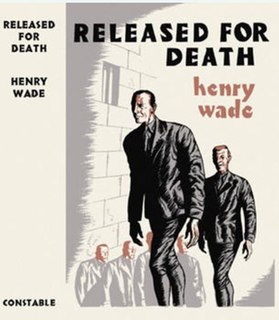
Released for Death is a 1938 crime thriller novel by the British writer Henry Wade. Wade was a writer of the Golden Age of Detective Fiction, best known for his series featuring Inspector Poole. This was one of a number of stand-alone novels he wrote. It has elements of an inverted detective story, rather than the traditional closed circle of suspects.
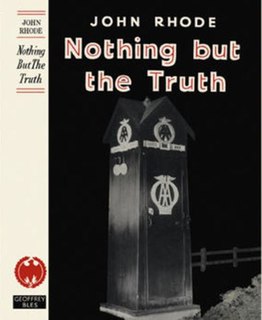
Nothing But the Truth is a 1947 detective novel by John Rhode, the pen name of the British writer Cecil Street. It is the forty forth in his long-running series of novels featuring Lancelot Priestley, a Golden Age armchair detective.
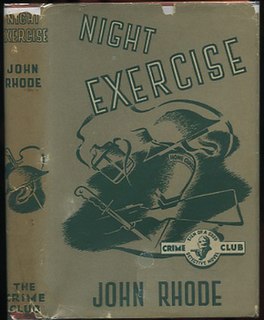
Night Exercise is a 1942 detective novel by John Rhode, the pen name of the British writer Cecil Street. It is a stand-alone wartime novel from Rhode, best known for his long-running series featuring Lancelot Priestley. It was published in America by Dodd Mead under the alternative title Dead of the Night.

Death Invades the Meeting is a 1944 detective novel by John Rhode, the pen name of the British writer Cecil Street. It is the thirty ninth in his long-running series of novels featuring Lancelot Priestley, a Golden Age armchair detective. Reviewing the novel for the Times Literary Supplement Maurice Willson Disher noted "His ingenuity is becoming as delicate to handle as high explosive. His stories may become so difficult to review without saying too much that his triumph will come when they cannot, for discretion’s sake, be reviewed at all."

Family Affairs is a 1950 detective novel by John Rhode, the pen name of the British writer Cecil Street. It is the fifty first in his long-running series of novels featuring Lancelot Priestley, a Golden Age armchair detective. It was published in America by Dodd Mead under the alternative title The Last Suspect. It has been described as "probably the best post-war Rhode novel".

Dead on the Track is a 1943 detective novel by John Rhode, the pen name of the British writer Cecil Street. It is the thirty seventh in his long-running series of novels featuring Lancelot Priestley, a Golden Age armchair detective. Like a number of mystery novels of the era, it has a railway setting. In theme and plot it is very similar to the author's earlier 1931 work Tragedy on the Line. It is the first entry in the series since Hendon's First Case (1935) in which Priestley's old associate Hanslet is the lead investigator. The other recurring police officer in the series Inspector Jimmy Waghorn is now working with military intelligence.




















